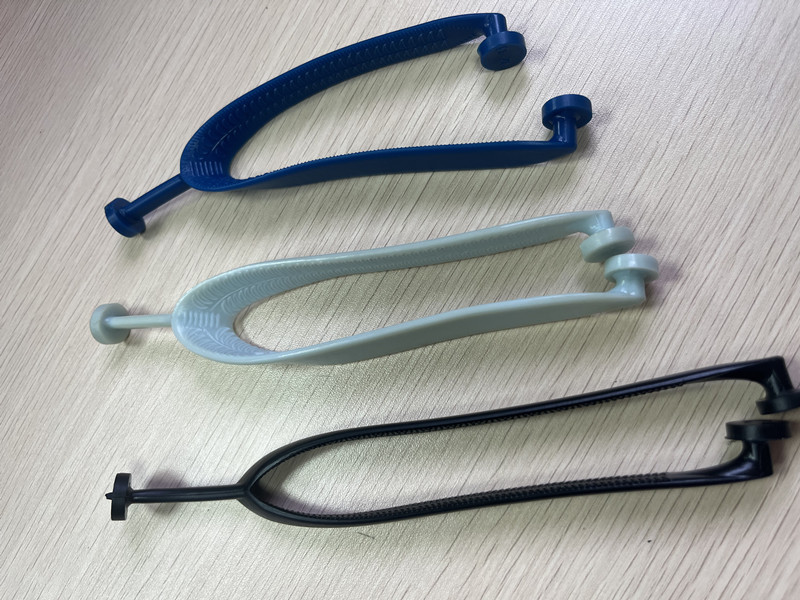News
What plastics raw materials is best choice for slippers strap
What plastics raw materials is best choice for slippers strap?

1. TPR (Thermoplastic Rubber) / TPE (Thermoplastic Elastomer)
Advantages:
Better tactile feel: Generally softer than PVC and has a rubber-like elastic touch, with better skin-friendliness.
Better environmental performance: Generally free of controversial plasticizers such as phthalates,
easier to recycle and reuse, and some models are biodegradable.
High transparency: It can achieve a "crystal bottom" effect like gelatin, and does not tend to turn yellow.
Disadvantages:
Higher cost: The prices of raw materials are usually higher than those of PVC.
Durability is slightly inferior: The flexibility resistance and tear resistance may be slightly lower than those of
high-quality modified PVC. After long-term wearing, it may be more prone to aging and cracking.
Higher processing requirements: More stringent requirements for injection molding temperature and process control.
2. EVA (Ethylene-Vinyl Acetate Copolymer)
Explanation: EVA is mainly used for the soles of shoes, being very lightweight, soft and elastic. However,
it is also sometimes used for the one-piece molding of entire slippers (including the straps).
Advantages:
Extremely light: The weight is extremely light.
Extremely soft: Has a foot feel like that of foam.
Non-toxic and odorless: Environmentally friendly and safe.
Disadvantages:
Poor support: Too soft, lacking in support, prone to collapse and deformation.
Not durable: Poor in wear resistance and tear resistance, prone to tearing, not suitable for use
as a sole material for individual carrying straps. Usually used as the material for one-piece slippers.
3. Natural rubber / Silicone rubber
Advantages:
Top-quality touch and environmental friendliness: With excellent softness,
elasticity and anti-allergy properties, it is the top choice for high-end and eco-friendly brands.
Extremely durable: It has excellent resistance to aging and flexing, and has a long service life.
Excellent anti-slip performance: Even after coming into contact with water,
it can still maintain excellent anti-slip properties.
Disadvantages:
The cost is extremely high: The costs of raw materials and processing are the highest among all materials.
Complex processing: Usually requires vulcanization molding, which is more time-consuming and energy-consuming than injection molding.
Heavier in weight: It is heavier than PVC and TPR.
Design limitations: The colors are not as rich and vibrant as those of PVC.
4. Textiles (canvas, velvet, etc.) or Leather
Advantages:
Extremely comfortable: Wicks away sweat, breathable, skin-friendly, especially suitable for long-term wear.
Fashionable appearance: Capable of creating various textures and styles, often used in fashion slippers.
Disadvantages:
Poor durability: not waterproof, not wear-resistant, prone to dirt and difficult to clean. It will age easily with prolonged exposure to sunlight.
Structural issue: It is impossible to mold the connecting tongue for the shoe sole like plastic.
It needs to be sewn or glued to the plastic part, and the connection point is a vulnerable area.
Cost varies: High-quality leather has a high cost but is durable; ordinary textiles have a low cost but are not durable.
5. Modified PVC
Comparison of Materials for Flip-Flop Straps
| Material | Key Advantages | Key Disadvantages | Common Application / Positioning |
|---|---|---|---|
| Modified PVC | Best overall cost-performance, highly adjustable softness, durable, rich color options, highly efficient processing (injection molding) | Environmental concerns (plasticizer issues), feel is less premium than natural materials | Mainstream market, fast fashion brands |
| TPR/TPE | Softer feel, more eco-friendly (often phthalate-free), high clarity/transparency | Higher cost than PVC, slightly lower durability (can crack with age) | Mid-range market, eco-friendly lines, children's sandals |
| EVA | Extremely lightweight, very soft cushioning, non-toxic and odorless | Poor support, not durable (low abrasion & tear resistance), deforms easily | One-piece molded indoor/slipper sandals |
| Natural Rubber / Silicone | Premium comfort/feel, extremely durable, most eco-friendly & hypoallergenic | Very high cost, heavier, slower processing (vulcanization) | High-end market, professional outdoor sandals |
| Textiles (Canvas) / Leather | Breathable, moisture-wicking, fashionable styles, comfortable against skin | Not abrasion-resistant, not waterproof, difficult to clean, degrades in sun | Fashion sandals, indoor slippers |
Expanded Details on Advantages & Disadvantages
Modified PVC: The plasticizers (e.g., DOP, DOTP) allow precise tuning of flexibility.
The main environmental issue involves certain phthalate plasticizers,
though the industry is shifting to safer alternatives.
TPR/TPE: A popular PVC alternative perceived as more sustainable.
However, some grades can be less resistant to long-term wear and UV exposure, leading to cracking.
EVA: Prized for its foam-like, cushioned feel but lacks structural integrity for a strap alone.
Best suited for soft, one-piece designs where the strap and sole are molded together.
Natural Rubber: Offers superior grip, especially when wet. The high cost comes from raw material sourcing
and the energy-intensive vulcanization process required to cure it.
Textiles/Leather: Provide the best breathability but are susceptible to water damage,
odor, and wear from friction. The connection point between the fabric strap and the sole is often a structural weakness.
Related News
- Polycarbonate vs. Acrylic: Choosing the 2025-09-10
- The Engineer's Guide to Plastic Material 2025-09-05
- The Ultimate Guide to Different Types of 2025-08-30
- Comparison of Plastics Materials for In 2025-08-28
- Enhanced Strength & Rigidity: Glass Fibe 2025-08-14
Categories
Contact us
Dongguan Forever Co., Ltd.
Contact:Elaine
Mobile:+86 135 39 444 950
Email:[email protected]
Add:No. 85, private road, qiwutang Industrial Zone, Wanjiang District, Dongguan City, Guangdong Province, China
